Charles Gleyre: The Reformed Romantic
by Matthew Innis |To date, France has never devoted a solo exhibition to Charles Gleyre. Yet he was a major figure in academy painting in Paris in the mid-nineteenth century. For a long time, given the smooth perfection of his facture and his subject matter, mostly taken from mythology, he was taken for a cold, conventional esthete blind to the revolutions of his time. However, research into the history of art draws attention to the important role played by his studio, which gave us artists like Jean-Léon Gérôme que Claude Monet and Fréderic Bazille. Also, fresh interpretations of his work, including first and foremost the psychoanalytical analysis published by Michel Thevoz in 1980, have uncovered the fascinating contradictions of both the artist and his work. Placed under the sign of spleen and the ideal, the exhibition is an opportunity, through the major loan from the Cantonal Museum of Fine Arts in Lausanne, to delight once more in the illusions of academicism.
Confessions of a child of the century
Charles Gleyre’s role in the epic story of 19th century French painting is all too often overlooked. This artist, who made Paris his adoptive home, actually showed little regard for his legacy in France. Born in the Canton of Vaud in 1806, Gleyre remained a lifelong Swiss citizen and fervent Republican.
After Louis-Napoleon Bonaparte’s 1851 coup d’état, which he deplored, he entertained little, stopped exhibiting, and spurned public commissions. Ill-health and the Franco-Prussian War in 1870 forced him to give up teaching.
Taciturn, solitary, cynical and humble, Gleyre was already close to being consigned to oblivion when he died in May 1874. His friend Charles Clément strove in vain to gather the last remaining accounts of those who knew him and to inventory the many works of art which had already been scattered abroad. Before long, the melancholic canvas Lost Illusions in the Musée du Louvre was the last remaining vestige. He was remembered as the first teacher of Sisley, Bazille, Renoir and – more fleetingly – Monet, all rebellious pupils rather than disciples.
Why is it therefore worth bringing Gleyre back into the public eye in an exhibition? Is it because he was an impassioned Romantic and intrepid traveller who then became an apostle of Beauty? Is it because his passion for the past inspired him to imagine a prehistoric landscape? Is it because this dyed-in-the-wool misogynist elevated the power of female creativity to new heights? Was he the last imitator of Neoclassicism, a repentant Romantic or a precursor of Symbolism? The full richness of the paradoxical and inventive work of Charles Gleyre, which is a mirror for the 19th century, can now be seen afresh by the 21st century.
From Parisian apprentice to Roman brigand
Charles Gleyre was orphaned at the age of twelve and taken in by his uncle, a modest broker in Lyon. He was expected to turn his artistic talents to a career in manufacturing design in the textile business, but the young man set his sights on the higher art of painting. After studying drawing in Lyon, he began attending the Paris School of Fine Arts in 1825 and discovered a capital city in the grip of artistic ferment.
Despite enrolling at the studio of Louis Hersent, a conventional and a self-seeking flatterer painter, Gleyre displayed a distinctly Romantic temperament in love with freedom and excess. He copied Théodore Géricault and Pierre-Paul Prud’hon, tragic figures whose recent demise was a frequent subject of conversation in the studio.
In 1828, he continued his education in Italy so that he could see the work of Michelangelo, whose eloquent power enthralled him. In Rome, he made the acquaintance of fellow Swiss artist Léopold Robert, whose scenes of brigands in the Roman countryside, a picturesque, heroic and modern subject, were hugely successful at the time. Drawing on the same subject, in 1831 Gleyre produced his first painting – The Roman Brigands –, a scene of unprecedented sadistic realism. In line with the frenetic songs of Berlioz, the work was so violent and irreverent that it could not be exhibited and was doomed to languish unseen in his studio. From then on, the young painter was painfully aware of the gulf between his dream of fame and the freedom to express his creativity.
Surviving the East
Charles Gleyre’s journey from Rome to Sudan and back to France via Beirut lasted over three years and was undoubtedly the adventure of a lifetime. Its wonderful intensity, which was simultaneously dazzling and nightmarish, made it an exceptional experience which set him apart from his fellow artists. In the 1830s, even the most daring among them neither ventured beyond the confines of Greece, which had just thrown off the shackles of Ottoman rule, nor beyond the Turkish coast and the North African countries colonised by French troops. Gleyre’s epic journey therefore had little in common with the comfortable diplomatic mission which Eugène Delacroix had accompanied to Morocco two years earlier.
Weary of languishing in obscurity in Rome, Gleyre entered the employment of the wealthy American traveller and philanthropist John Lowell Jr. in April 1834. Lowell paid his protégé’s expenses in exchange for sketches of the archaeological sites they explored and the costumes of the people they met. Gleyre initially shared his patron’s enthusiasm and produced stunning watercolours of sites ranging from Pompeii to Luxor, but the increasingly exhausting and dangerous conditions on the journey, punctuated by dysentery, sunstroke in 45°C heat in the Nubian desert, and a serious eye infection sapped the young painter’s strength and morale. Aware that he was putting his career in jeopardy by following this man who laughed in the face of death, Gleyre left his patron’s employment in Khartoum after eighteen months on the road. Lowell died six months later in Bombay. Gleyre risked life and limb on the journey back to France, which took over two years.
Return to Paris: the compromise of pastiche
Welcomed back in 1838 by his family in Lyon in what he described as “an infinitely worse state than the prodigal sonâ€, Charles Gleyre settled permanently in Paris with the intention of aspiring to the pinnacle of artistic success – the historical painting genre. The dilemma was how to forge a career without a reputation or money.
Using the watercolours and sketches produced in the East, which he obtained permission from Lowell’s heirs to reproduce for his own purposes, Gleyre created original compositions attempting to tap into the Parisian public’s taste for all things eastern. Surviving examples are extremely equivocal and were already outdated and disappointing even then. Picturesque anecdotes vie with conventional eroticism, occasionally verging on grotesque humour. The artist gave up on translating his personal experience of the East, which it was probably impossible to mould to the fantasies of Parisian art enthusiasts. Instead, he debased his talent by imitating prominent painters – Alexandre Decamps, Horace Vernet, Eugène Delacroix – who had successfully used their memories of the East to breathe new life into historical and religious painting.
In Gleyre’s work, the artistic legacy of the East only emerged later and more subtly, for example in the poetic power of his arid landscapes silhouetted against the light of dusk or dawn. The artist intuitively translated them into his visions of pre-civilised worlds.
A stumble on the staircase: the decor for the Château de Dampierre
Dissatisfied with the dead end of orientalist subjects, Charles Gleyre pursued an alternative avenue in his quest to achieve greatness as a painter: the mural. The multitude of commissions to decorate great public buildings or places of worship from King Louis-Philippe’s government and prefectures offered a welcome source of income. This probably explains why the artist displayed his St John on the Island of Patmos (Abbeville, Musée Boucher de Perthes) at the Salon in 1840. This monumental figure with overtones of Michelangelo could have been tailor-made for an altar or cupola.
The low-key but encouraging reviews in the press prompted the Duc de Luynes to approach Gleyre to decorate the grand staircase of the Château de Dampierre, in the Chevreuse valley a year later. In a Louis XIV revival stucco decor designed by the architect Félix Duban, the painter was tasked with creating an allegorical scheme predominantly in greys, probably following the personal specification of the Duc de Luynes, a renowned authority on classical civilisations.
In attempting to give shape to ideas in a striking manner, Gleyre embarrassed the others. This is apparent in the lavish realism of the studies he sketched, which earned him scathing criticism from eminent fellow painter Ingres, who had been asked to decorate the adjacent grand drawing room. Possibly at his request, the Duc de Luynes decided to have half of Gleyre’s work painted over. The painter never referred to this humiliating incident and redeemed himself with a resounding success at the Salon two years later.
The Evening: the dawn of success
After many setbacks and disappointments, Charles Gleyre finally found instant fame at the age of thirty-seven when he exhibited The Evening at the Salon of 1843.
The painting met with unanimous acclaim from the public and critics alike. It was awarded a gold medal and acquired by the French State, which exhibited it at the Musée royal des artistes vivants (Royal Museum of Living Artists). Widely disseminated as a print with the Balzacian title The Lost Illusions, the picture became embedded in the popular imagination of several generations of French people.
The Evening is a hybrid composition, a poetic allegory which is much more easily assimilated into spectators’ fantasies because it does not refer to an episode from mythology or ancient history. Gleyre finally managed to resolve his problematic relationship with the East, not by reinterpreting sketches made in situ, but by re-reading the poetic notes he had jotted down in a notebook.
The Evening does not feature things he saw, but reconstructs a vision. From the hallucination he experienced late one day in March 1835 on the banks of the Nile, Gleyre creates a melancholic and subtly autobiographical meditation on the loss of his youthful illusions about fame and love. However, this lament does not exhaust the subject of this work, which also celebrates the magical ower of painting to translate a synesthetic experience. He wrote in his journal: “the triple harmony between forms, colours and sounds was completeâ€.
Historical ambition
The success of The Evening finally opened up the avenues of the great genre to which Charles Gleyre aspired – historical painting. He focused all his attention on exhibiting an imposing, noble and austere  Separation of the Apostles at the Salon of 1845, which was quickly acquired by the French State. He was then entrusted with a prefectural commission for a Parisian church (a Last Supper, which was eventually downgraded to a Pentecostscene).
News of the painter’s reputation soon reached Lausanne, the capital of his homeland. The Canton of Vaud commissioned two successive large historical compositions celebrating the country’s independence – Major Daveland Romans Under the Yoke –, which were immediately hailed as Swiss national icons and masterpieces in the new Museum of Fine Arts in Lausanne.
The artist took his responsibilities very seriously and applied the timeless principles of Horace: instruct, move, and delight. In line with recent developments in the study of history, he carried out impressive documentary research with historians and archaeologists in order to create accurate reconstructions. The complex compositions aim to be instructive and to inspire the cathartic emotion of a face-to-face encounter with the heroes of a history viewed afresh through the prism of his Republican beliefs. The meticulous attention paid to the beauty of certain sections, humorous details and irreverent nods provide the requisite element of delight.
An archaeological approach to landscapes
“Landscapes are good for the youth who haven’t yet had their First Communion or for old people who no longer have sufficient imagination to invent subjects and paint figures.†However, one should not be deceived by this condescending aphorism. Charles Gleyre took a strong interest in landscapes provided they featured the ancient world. Only mountains, volcanoes and deserts devoid of any trace of human development were of artistic interest. He likes painting memories of Egyptian and Turkish landscapes which reveal the effects of soft afternoon light on rocky outcrops which bear witness to a turbulent telluric past.
Gleyre drew on this eastern geological base for The Great Flood, a sublime vision of the dawn of time. The panoramic format and the use of almost phosphorescent pastel pigments which illuminate the surface of the oil paint were perhaps inspired by a diorama featuring this subject which opened in Paris in 1844.
Gleyre continued to experiment, even boldly producing sketches for the first prehistoric landscapes in Western painting, in which he tries to reconcile the story of Genesis with discoveries in the new discipline of palaeontology. Gleyre drew for the last time on the dramatic power of an unsettling wild landscape to bring to life a primitive Greek world in which Pentheus, King of Thebes, was massacred.
The thyrsus and the distaff: the invention of feminine art
The Dance of the Bacchantes, the last painting by Gleyre exhibited publicly in Paris (at the Salon of 1849), came as a surprise to enthusiasts of bacchanals, which had been a traditional subject since the days of Titian and Poussin. Bacchus, Silenus and the satyrs are all absent, and the painting is therefore neither mythological nor fabulous, but rather historical and religious. Gleyre paints a mysterious, wild and exclusively female ritual, captured in very precise draughtsmanship and a smooth technique producing what one critic calls the strange effect of a “choreography, which is both noble and unbridled, frenzied and rhythmicâ€.
Following in the footsteps of
A l’instar de Pentheus, The Dance reveals a new, popularised reading of the roots of ancient Greek civilisation and its forms of worship in the 1830s. Contrary to the solar, masculine and Apollonian vision which had been extolled by Winckelmann since the mid-18th century, Gleyre depicts the primitive, eastern and Dionysian Greece, posited in the works of the philologist and historian Friedrich Creuzer.
Subjects drawn from Antiquity provided the painter with the opportunity for a personal and unusual meditation on the origins of the arts, omitting any reference to either Apollo or Orpheus. In The Dance invented by the Bacchantes, the music played to animals in Minerva, he art of spinning taught to an absurd Hercules by the beautiful <span class=”italiquenoir”Omphale, and the love poetry composed by Sappho – the secret of the arts seems to be the preserve of women, acquired through a mysterious and intuitive affinity with the divine powers of creation.
Towards the idyll: casting light on flesh
Charles Gleyre’s last paintings feature the theme of reconciliation. After scenes of abandonment, oppression and humiliation systematically pitting men against women, the artist turns his back on violence, both physical and symbolic. The problematic search for harmony, which dominates Gleyre’s work as a whole, was now coming to fruition.
His last completed painting, The Return of the Prodigal Son, could be seen as the artist reflecting on the excesses of his own youth, or as the fantasy of an orphan casting a rosy glow on the golden age of family life through painting.
The Garden of Eden, the hypothetical companion piece to The Evening, which was not completed before the artist’s death, was intended to represent the radiant morning on which Adam and Eve, the parents of the human race, discovered the beauties of the earth prior to the Fall. Although the canvas did not progress beyond the preparatory drawing, the sketch hints at the iridescent light outlining the figures with fine gold line on a meadow dominated by the Swiss Alps.
The theme of youth rediscovered through the purifying light of the sun first appeared in surprising bathing scenes in the 1860s. In addition to abandoning myth and history, they mark a clear stylistic break. The female nude is more relaxed and represents a subtle shift from Gleyre’s academic inclinations towards a dazzling freshness which would not be out of place in the pictures of bathers by his “Impressionist†pupil Auguste Renoir.
In the studio: drawing first and foremost
Although Gleyre’s painting features exquisitely refined use of colour, drawing lies at the core of his craft. Forms are very clearly delineated and volumes are delicately sculpted, conferring on his compositions the clarity of bas-reliefs from Antiquity. The artist prepares each figure in his paintings by meticulously studying gestures and expressions, which are given a sculptural quality by carefully muted work in pencil or red chalk.
Gleyre taught this science of composition to his pupils for over twenty-five years. In 1843, when he was basking in the glow of the success of The Evening at the Salon, he replaced the painter Paul Delaroche as the head of one of the most popular teaching studios in Paris. Known for his open-minded approach – he trained historical and landscape painters alike – and for his democratic views, Gleyre was a humble and attentive teacher who was also praised for his generosity. His pupils only paid a contribution to his rent and the cost for the models.
In the early 1860s, when the “master’s†health was deteriorating, the studio experienced financial difficulties. It closed on the eve of war in 1870. Over 500 young painters – male and female – reaped the benefit of his teaching, including figures as diverse as Greek Revival artists Jean-Louis Hamon and Jean-Léon Gérôme, the American James Whistler and future Impressionists like Alfred Sisley, Frédéric Bazille and Auguste Renoir.
Â

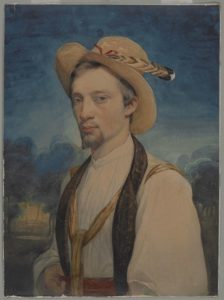
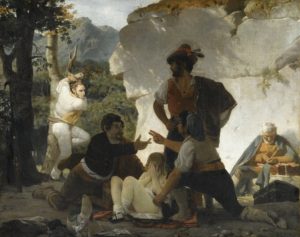
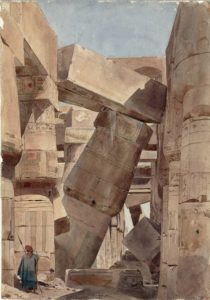
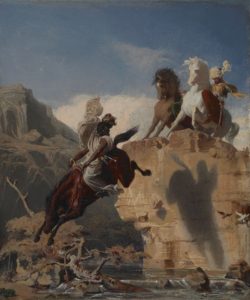
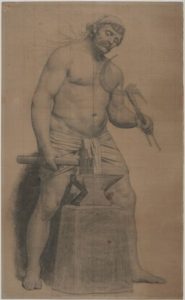
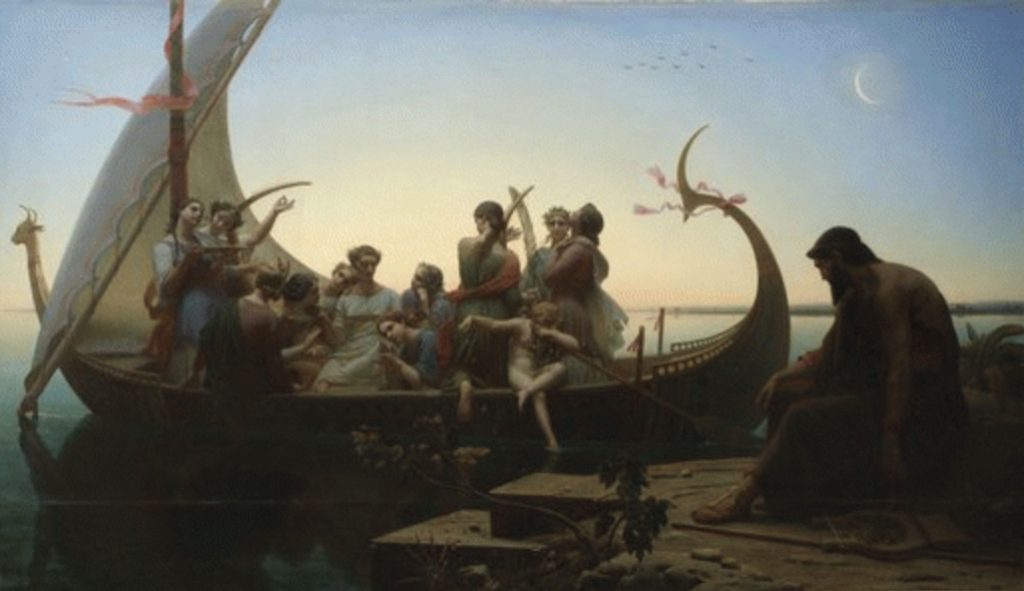
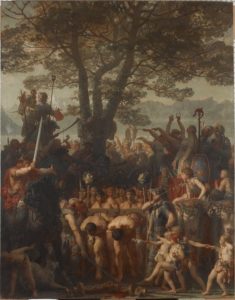
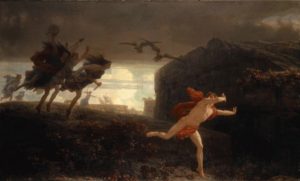
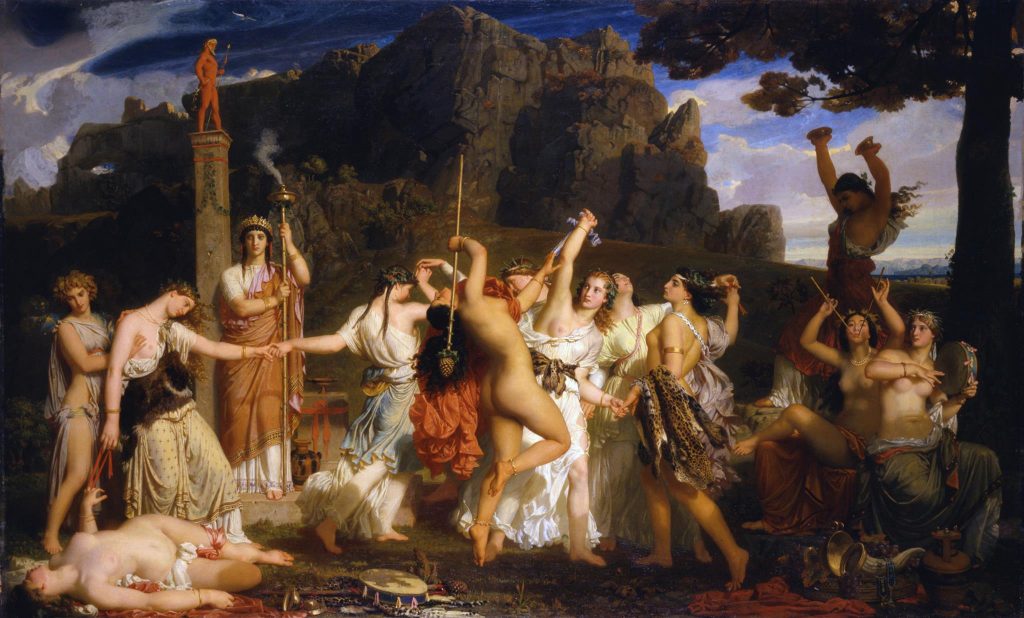
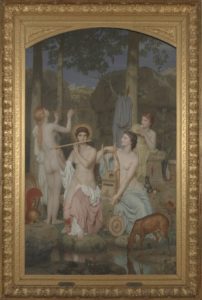
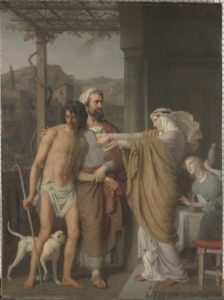
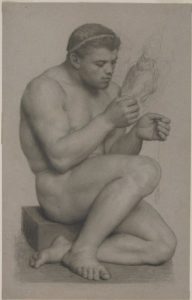
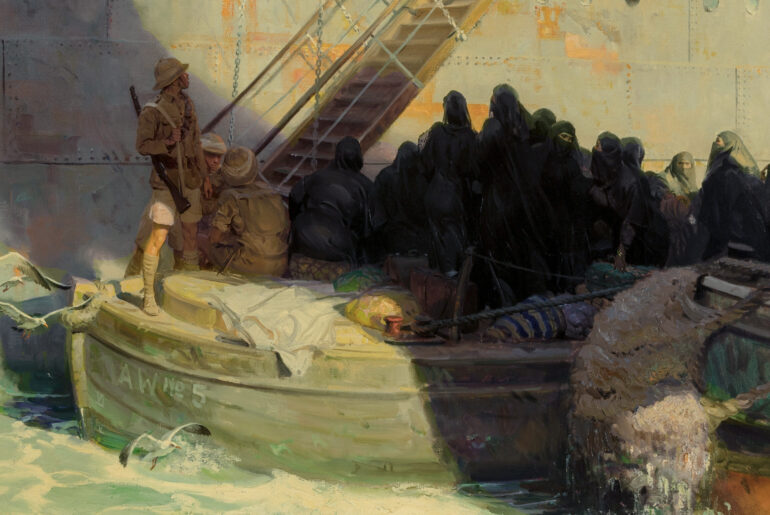
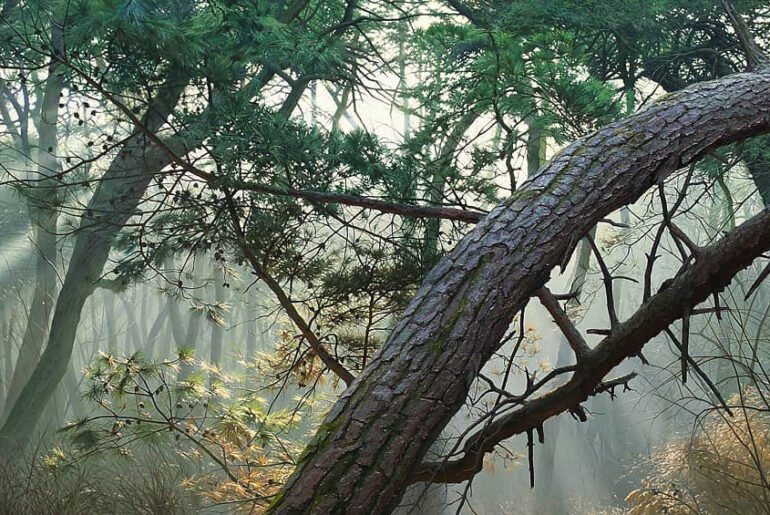
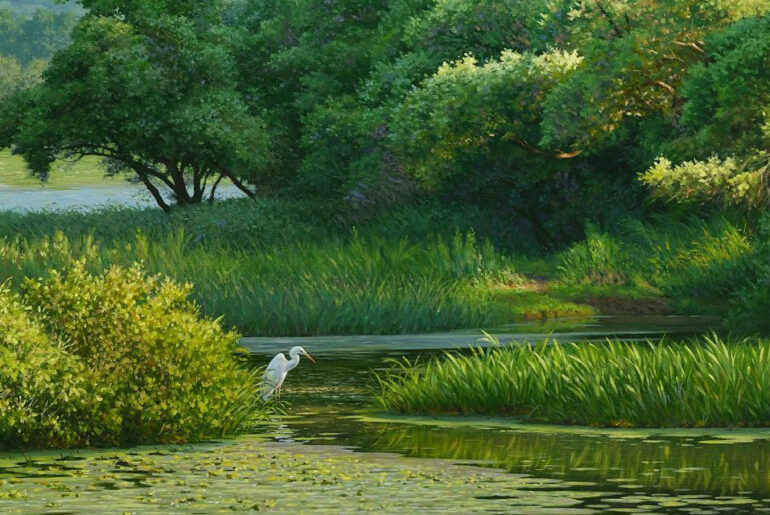
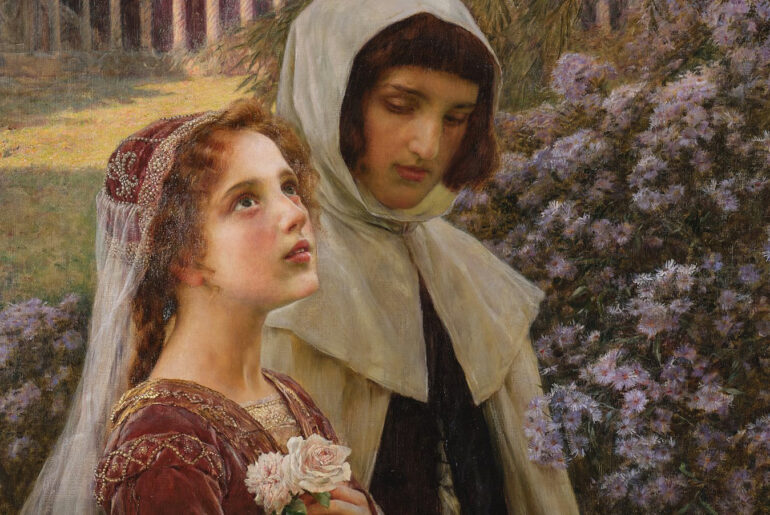
Where: Musee d'Orsay, Paris (FR)
When: May 10 – September 11, 2016